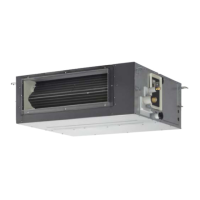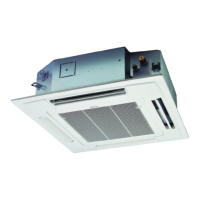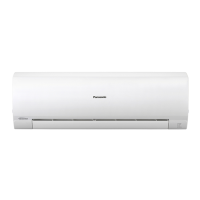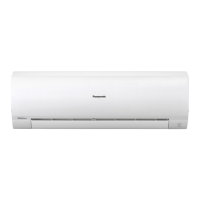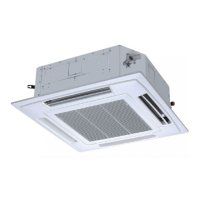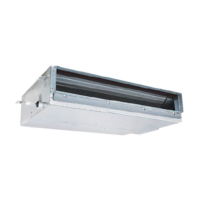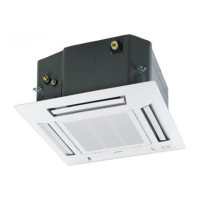20
(4) Using a sabre saw, key hole saw or hole-cutting drill
attachment, cut a hole in the wall. See Table 4 and
Fig. 3-77.
Table 4
Hole Dia.
80 mm
(5) Measure the thickness of the wall from the inside edge to
the outside edge and cut PVC pipe at a slight angle 6 mm
shorter than the thickness of the wall. (Fig. 3-78)
(6) Place the plastic cover over the end of the pipe (for indoor
side only) and insert the pipe in the wall. (Fig. 3-79)
3-22. Install the Rear Panel on the Wall
Be sure to confirm that the wall is strong enough to suspend the
unit.
There are a number of screw holes on the rear panel.
Using the 8 screw holes with A mark is recommended to attach
the rear panel securely to the wall.
NOTE
Be sure to install the unit within the range of the wall.
If Wooden Wall
(1) Attach the rear panel to the wall with the 8 screws
provided. (Fig. 3-80)
If you are not able to line up the holes in the rear panel
with the beam locations marked on the wall, use rawl plugs
or toggle bolts to go through the holes on the panel or drill
5 mm dia. holes in the panel over the stud locations and
then mount the rear panel.
(2) Double check with a carpenter’s level or tape measure
that the panel is level. This is important to install the unit
properly. (Fig. 3-81)
(3) Make sure the panel is flush against the wall. Any space
between the wall and unit will cause noise and vibration.
NOTE
Hole should be made at a slight downward slant to the outdoor
side.
Fig. 3-77
Fig. 3-78
Fig. 3-79
Fig. 3-80
Fig. 3-81
Outdoor
side
Indoor
side
PVC pipe (Locally purchased)
Cut at slight angle
INSIDE OUTSIDE
Plastic cover
(Locally purchased)
PVC pipe
Slight
angle
Wall
PanaIndoor-337012Eng.indb20PanaIndoor-337012Eng.indb20 2012/03/2116:20:482012/03/2116:20:48

